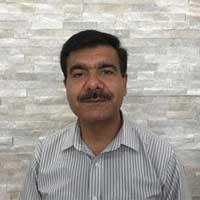Dr Zahid graduated in1991 with Bachelor of Medicine & Bachelor of surgery ( MBBS ) . He is a Fellow of the Royal College of General Practitioners. Dr Zahid has experience in General Practice and Occupational Health Services including Injury management, Pre-placement Medical Asessments, Travel Medicine, Skin Cancer Screening and performing minor surgical procedures.
Dr Zahid is an authorised health professional for Rail Medical Assessments, an affiliated practitioner with Injury NET and is a designated Aviation Medical Examiner ( DAME ) by CASA.
He hold memberships of the Royal Australian College of General Practitioners, Skin Cancer College Australia and Australian Society of Aerospace Medicine.
Pre-employment medical assessment guarantees that an employee is well adapted to its occupational environment. Our Gabba medical centre company/clinic provides a complete package of medical tests that allow the employee to function efficiently and safely. We offer pre-employment medical assessment for aviation, railway, and travelling to specific destinations.


















